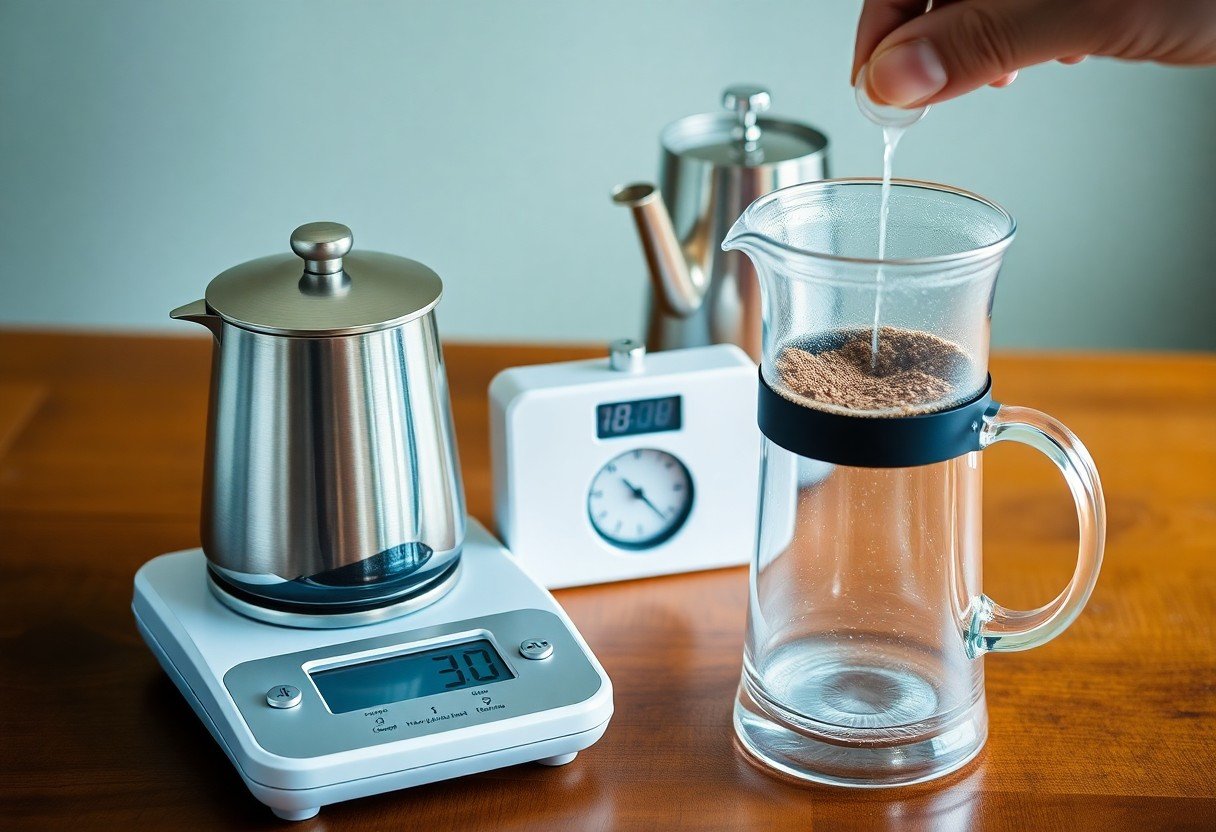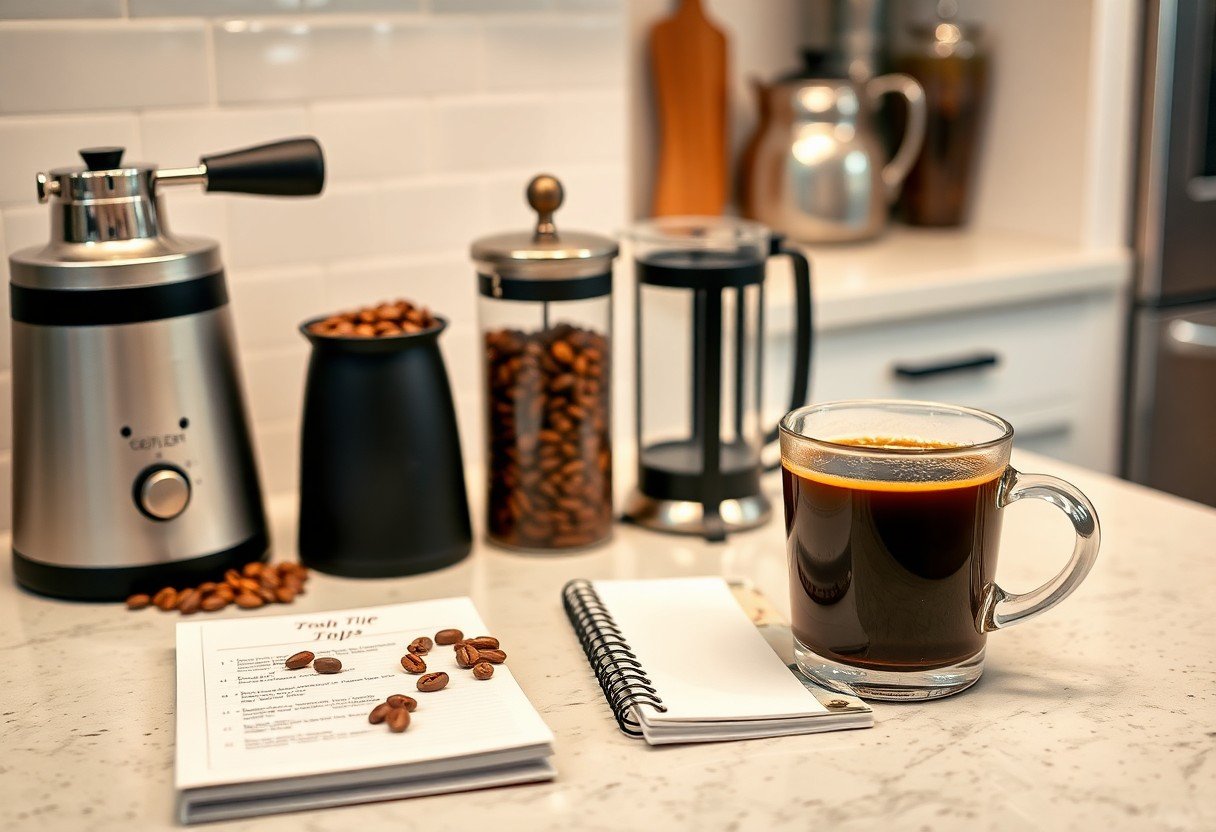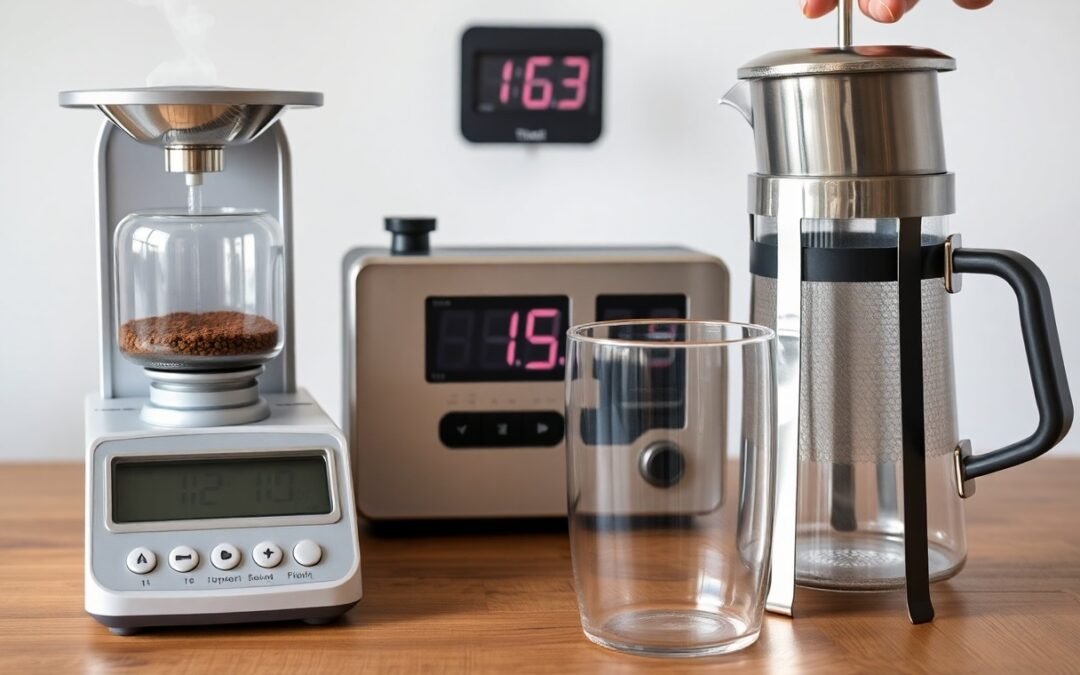Coffee is an art and a science, and with a few vital tips, you can elevate your home brewing game to new heights. By paying attention to factors like water quality, grind size, and brew time, you can transform ordinary beans into an extraordinary cup. This guide will provide you with practical steps to refine your skills and impress your taste buds, ensuring that each cup you brew is a delightful and sophisticated experience. Dive into these ten vital tips and take your coffee journey to the next level.
The Art of Selecting Quality Beans
Selecting quality coffee beans is vital for brewing a sophisticated cup at home. Begin by seeking out specialty-grade beans, typically graded 80 or higher on a 100-point scale. Look for ethically sourced beans from reputable roasters, who prioritize freshness and traceability. Exploring different bean origins will enhance your brewing experience, as each region offers distinct flavor profiles that can elevate your daily coffee ritual.
Understanding Bean Origins
Familiarizing yourself with coffee bean origins allows you to explore a variety of flavor notes. Beans from regions like Ethiopia are known for fruity and floral characteristics, while those from Colombia often showcase a nutty and balanced taste. By understanding these differences, you can tailor your selections to match your palate, creating a more enjoyable coffee experience.
Evaluating Freshness and Roast Date
Freshness is vital for optimal flavor in your coffee. When choosing beans, examine the roast date; ideally, you want beans roasted within the last two to four weeks. Past this window, coffee can lose its vibrant flavors and aromas. Always buy in small batches to ensure you consume them while at their best.
To determine freshness, check for packaging that includes a roast date rather than just an expiration date, which can be misleading. When you grind and brew coffee, freshness impacts the extraction process. The oils and compounds responsible for flavor can diminish over time. Purchase whole beans and grind them just before brewing for maximum freshness, ensuring a rich and aromatic cup each time.

Mastering the Grind for Optimal Extraction
To brew a truly sophisticated cup of coffee, mastering your grind is vital for optimal extraction. The grind size affects how quickly water interacts with coffee grounds, directly influencing flavor and aroma. By understanding the right grind size and consistency, you can enhance your brewing experience and elevate your coffee’s taste profile, guaranteeing a satisfying cup every time.
Choosing the Right Grind Size
Selecting the appropriate grind size is key to achieving your desired flavor profile. For methods like espresso, a fine grind is necessary for rapid extraction, while coarser grinds work best for brewing methods such as French press or cold brew. Tailoring your grind size to your brewing technique helps unlock the full potential of your coffee beans.
The Impact of Grind Consistency
Grind consistency plays a significant role in the extraction process. When your coffee grounds are evenly sized, water extracts flavor uniformly, resulting in a balanced and rich cup. Inconsistent grind sizes can lead to over-extraction of smaller particles and under-extraction of larger ones, creating an uneven and unsatisfactory cup. Investing in a quality grinder that provides a uniform grind will greatly improve your home brewing efficiency.
Water Matters: The Unsung Hero of Brewing
Water is often overlooked in the coffee brewing process, but it plays a vital role in achieving a rich and flavorful cup. The quality and characteristics of the water you use can significantly affect the taste of your coffee. By paying attention to the water, you can enhance the overall brewing experience and enjoy a superior cup at home.
Ideal Temperature and Its Effects
Brewing coffee at the right temperature is vital for extracting the best flavors. Water that is too hot can lead to bitterness, while water that is too cool may result in a weak brew. The optimal temperature range typically falls between 195°F and 205°F (90°C to 96°C).
Temperature Effects on Brewing
| Water Temperature | Flavor Impact |
|---|---|
| 195°F (90°C) | Balanced flavor extraction |
| 205°F (96°C) | Enhanced sweetness and complexity |
| Below 195°F | Under-extracted, weak taste |
| Above 205°F | Over-extracted, bitter flavor |
The Role of Water Quality
The quality of water you use is fundamental to brewing great coffee. Impurities and minerals can alter the flavor, often negatively impacting your cup. Using filtered or distilled water helps ensure that the unwanted tastes are removed, allowing the true essence of your coffee beans to shine through.
Investing in good quality water not only prevents off-flavors but also enhances the extraction process. Water with the right mineral content, particularly calcium and magnesium, supports optimal brewing and promotes a balanced flavor profile. Testing your water can help you choose the best option, ensuring you achieve a consistently enjoyable coffee experience at home.

Brewing Techniques That Elevate Flavor
To create a sophisticated cup of coffee at home, you must master your brewing techniques. Different methods, from French press to pour-over, allow for unique flavor extractions that can enhance or diminish the coffee’s inherent qualities. By fine-tuning aspects like water temperature and brewing time, you can discover the depths of flavor and aroma your favorite beans have to offer.
Exploring Different Brewing Methods
Dive into various brewing techniques to find what resonates with your taste preferences. Each method, whether it’s an espresso machine or a cold brew pitcher, brings out distinct flavor profiles in the coffee. Experimenting with these diverse styles can lead to a richer enjoyment of your daily cup, showcasing the versatility of quality beans.
Timing Your Brewing for Perfection
Precision in timing can significantly impact the flavor profile of your coffee. Each brewing method has an optimal duration during which extraction occurs, influencing taste. By aligning your timing with the recommended ranges for each technique, you ensure balanced flavors that highlight rather than mask the characteristics of your coffee.
Timing directly affects the extraction process, which can turn delightful coffee into a bitter or sour experience if neglected. For example, a French press should steep for about four minutes, while pour-over typically needs two to three minutes. Adjust your brewing time according to personal taste and the specific method you’re using. A stopwatch or timer can be beneficial to achieve consistency and perfection in every cup, allowing you to enjoy the full spectrum of flavors your coffee has to offer.
Empowering Your Palate: Experimenting with Ratios
Experimenting with coffee-to-water ratios allows you to discover and refine your unique flavor preferences at home. Starting with a standard ratio can guide you, but adjusting it according to your taste can create a more personalized and sophisticated cup. Whether you prefer a lighter, more delicate brew or a richer, robust flavor, finding your ideal balance unlocks the full potential of your coffee experience.
The Science Behind Coffee to Water Ratios
The coffee-to-water ratio significantly influences extraction, which determines the body and flavor in your brew. Typically, a standard ratio is around 1:15, meaning 1 gram of coffee for every 15 grams of water. However, small adjustments can affect how soluble compounds are extracted, impacting bitterness and acidity. Understanding this science helps you make informed adjustments to enhance your cup.
Personalizing Strength and Flavor Profiles
To personalize your coffee, start by experimenting with different ratios to find what best suits your taste. If you enjoy a bolder flavor, try increasing the coffee amount or decreasing the water. Conversely, if you prefer a milder taste, adjust by reducing the coffee or adding more water. Additionally, consider variations in grind size, brew time, and method, as these factors also play a significant role in flavor extraction, allowing you to create your perfect cup.
Enhancing Your Brew: Leveraging Additives
To elevate your coffee experience, consider incorporating various additives that complement and enhance your brew’s flavor profile. From spices to milk alternatives, these ingredients can unlock new dimensions in your coffee, transforming an ordinary cup into an extraordinary indulgence. Experimenting with these additives allows you to create a signature drink that reflects your personal taste preferences.
Exploring Flavor Enhancers and Complementary Ingredients
Delve into the world of flavor enhancers by adding spices like cinnamon or nutmeg, which can provide warmth and complexity to your coffee. Additionally, natural sweeteners such as honey or maple syrup can create a delightful balance when used in moderation. Don’t overlook the richness brought by milk substitutes like oat or almond milk, which can introduce creamy textures and subtle flavors.
Balancing Sweetness and Acidity for Depth
Striking the right balance between sweetness and acidity can significantly enhance the depth of your coffee. The goal is to create a harmonious interplay that brings out the best flavors, ensuring a well-rounded cup.
A proper balance of sweetness and acidity transforms your coffee by highlighting its inherent flavors while avoiding overpowering notes. For instance, using a touch of sweetener can soften the sharpness of high-acidity beans, creating a smoother taste. On the other hand, maintaining some acidity is vital since it provides freshness and brightness to your brew. Experimenting with different additives in controlled amounts will help you discover the perfect equilibrium for your palate, resulting in a coffee experience that is both complex and satisfying.
Summing up
Conclusively, by applying these 10 crucial tips for brewing a sophisticated cup of coffee at home, you elevate your coffee experience to new heights. From selecting high-quality beans to mastering water temperature and grind size, each factor plays a pivotal role in achieving the perfect brew. Experiment with different techniques, and don’t hesitate to adjust based on your personal taste preferences, ultimately allowing you to enjoy a rich, flavorful cup that rivals any café experience.
FAQ
Q: What type of coffee beans should I use for a sophisticated cup?
A: Choose high-quality, fresh, single-origin beans for distinct flavor profiles. Look for light to medium roasts to highlight unique tastes.
Q: How important is the grind size for brewing?
A: Grind size significantly affects extraction. Use a coarser grind for methods like French press and a finer grind for espresso to achieve optimal results.
Q: What water quality is best for brewing coffee?
A: Use filtered water to avoid impurities that can alter flavor. Ideal water temperature should be between 195°F to 205°F for optimal extraction.
Q: How can I achieve the right coffee-to-water ratio?
A: A standard ratio is 1:16 (1 gram of coffee for every 16 grams of water). Adjust according to personal taste preferences for stronger or milder brews.
Q: What brewing methods can enhance the complexity of my coffee?
A: Experiment with pour-over, AeroPress, or siphon brewing. Each method can bring out different flavor notes and aromas in the coffee.

